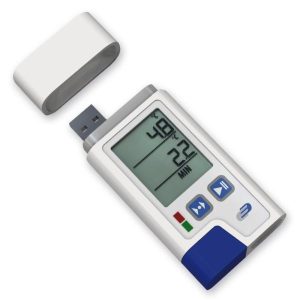If you’re interested in the world of automotive electronics, you’ve probably heard of the CAN bus system. CAN stands for Controller Area Network, and it’s a popular communication protocol used in modern vehicles. It allows various electronic components in a car to communicate with one another, exchanging data such as speed, temperature, and other vital information.
One problem that can arise when working with a CAN bus system is the need to split the network. For instance, you may want to add an additional device to the system without disrupting the existing setup. This is where a CAN bus Y-splitter comes in.
A CAN bus Y-splitter is a handy tool that enables you to divide a single CAN bus signal into two branches, allowing you to connect multiple devices to the same network. Essentially, it allows you to add a new device without having to rewire the entire system, making it an efficient and cost-effective solution.
Here are some reasons why a CAN bus Y-splitter might be the right choice for your automotive electronics project:
- Easy installation A CAN bus Y-splitter is straightforward to install. All you need to do is connect the splitter to the existing CAN bus network, and then plug in the additional devices. It’s that simple! This saves you time and effort and reduces the risk of making mistakes during the installation process.
- No need for extra wires Another significant advantage of a CAN bus Y-splitter is that it eliminates the need for additional wiring. This is particularly useful in automotive applications where space is limited, and adding new wires can be a significant challenge. By using a splitter, you can connect multiple devices without adding extra wires, making it an ideal solution for complex installations.
- Cost-effective When you’re working on a project that involves adding multiple devices to a CAN bus network, using a Y-splitter is a cost-effective solution. It eliminates the need to purchase additional network adapters, and you won’t need to invest in expensive wiring either. Overall, this can save you a significant amount of money while ensuring that your project is completed successfully.
In conclusion, a CAN bus Y-splitter is an essential tool for anyone working with automotive electronics. It provides an efficient and cost-effective way to split a CAN bus signal into multiple branches, allowing you to add additional devices to the network without disrupting the existing setup. So if you’re planning on working on a project that involves a CAN bus system, make sure to consider using a Y-splitter to make the process as smooth and efficient as possible.
First, it’s important to understand how a CAN bus network operates. A CAN bus system consists of a network of electronic devices, each with its own unique identifier, or ID. These devices communicate with one another by sending and receiving messages over the CAN bus network. The messages contain information about the device’s status, such as its speed, temperature, and other data.
A CAN bus Y-splitter is designed to take the incoming messages from a single CAN bus network and split them into two separate branches. Each branch can then be connected to a different device, allowing them to communicate with one another over the same network. The splitter essentially acts as a signal repeater, ensuring that each device on the network receives the same data.
One of the most significant benefits of using a CAN bus Y-splitter is that it eliminates the need for additional network adapters. Each device on the network requires a network adapter to communicate with the other devices. By using a splitter, you can avoid the need to purchase additional adapters, saving you time and money.
It’s also worth noting that a CAN bus Y-splitter is a passive device, meaning that it doesn’t require any power to operate. It simply takes the incoming signals from the CAN bus network and splits them into two separate branches. This means that it won’t introduce any additional noise or interference into the network, ensuring that your devices can communicate with one another without any issues.
When it comes to choosing a CAN bus Y-splitter, there are a few factors to consider. First, make sure that the splitter is compatible with your vehicle’s CAN bus network. Some splitters are designed for specific vehicle makes and models, so it’s essential to choose the right one for your application.
You should also consider the quality of the splitter itself. Look for a high-quality, well-built splitter that’s designed to withstand the harsh automotive environment. A durable, reliable splitter will ensure that your network stays up and running, even in challenging conditions.
In summary, a CAN bus Y-splitter is a valuable tool for anyone working with automotive electronics. It allows you to split a single CAN bus signal into multiple branches, providing a cost-effective and efficient way to add additional devices to the network. Whether you’re working on a small project or a large-scale installation, a CAN bus Y-splitter is a must-have tool for any automotive electronics enthusiast.
Advantages:
- Cost-effective: Using a Y-splitter can be more cost-effective than adding new wiring or purchasing additional network adapters. This makes it an ideal solution for those on a tight budget.
- Easy installation: A CAN bus Y-splitter is easy to install, which saves time and reduces the risk of errors during the installation process.
- Space-saving: Splitting the network with a Y-splitter eliminates the need for extra wiring, which is particularly useful in applications where space is limited.
- Passive device: A Y-splitter is a passive device, which means it doesn’t require any power to operate. This reduces the risk of introducing additional noise or interference into the network.
Disadvantages:
- Limited number of branches: A Y-splitter can only split a single CAN bus signal into two branches, so it may not be suitable for larger installations that require more devices to be connected to the network.
- Requires compatible devices: The devices that you want to connect to the network must be compatible with the CAN bus system and with each other. If they’re not compatible, you may experience communication issues or other problems.
- Potential for network disruptions: Adding new devices to a CAN bus network can cause disruptions, so it’s important to ensure that the network is properly configured and that all devices are functioning correctly.
- Lack of flexibility: Once the network is split with a Y-splitter, it may be challenging to reconfigure or change the setup without rewiring the entire system.
In conclusion, a CAN bus Y-splitter is a useful tool for dividing a single CAN bus signal into multiple branches. It’s cost-effective, easy to install, and space-saving. However, it has some limitations, including a limited number of branches and the need for compatible devices. Before using a Y-splitter, it’s important to carefully consider the advantages and disadvantages and ensure that it’s the right solution for your particular application.










